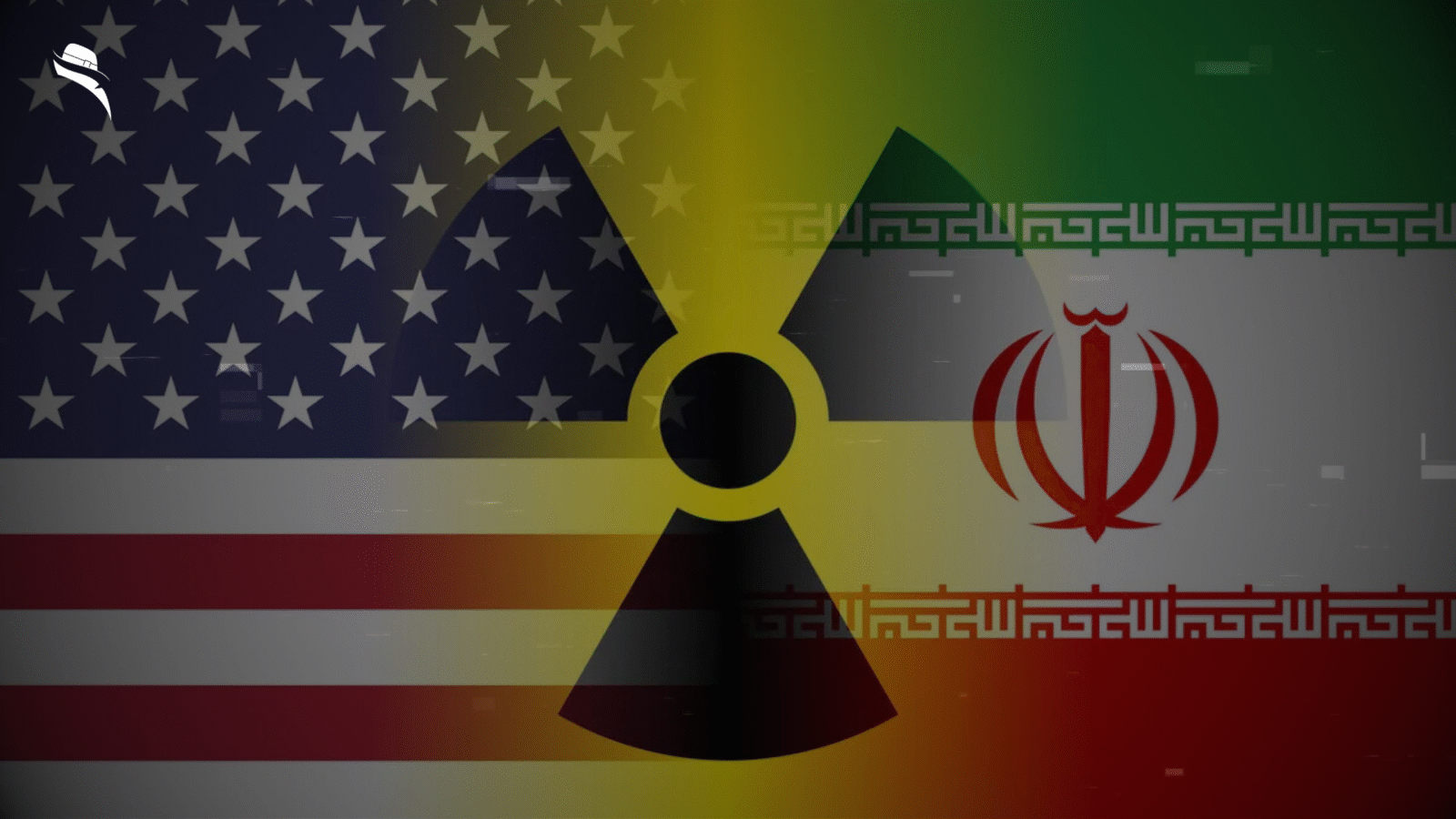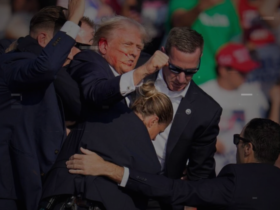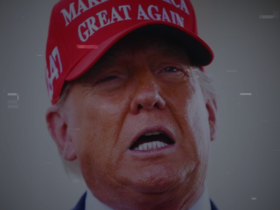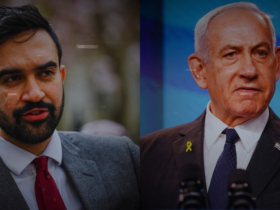The Iran and United States Nuclear Deal, signed in 2015, drastically extended Iran’s nuclear “breakout time” from a mere few months to a full year. Initially designed to prevent nuclear weapons development for at least a decade, the Joint Comprehensive Plan of Action (JCPOA) required Iran to cut its low-enriched uranium stockpile by 98% and reduce gas centrifuges by about two-thirds.
However, the landscape changed dramatically when the US withdrew from the Iran nuclear agreement in 2018. Consequently, Iran began exceeding the agreed-upon limits, with IAEA inspectors detecting uranium particles enriched to an alarming 83.7% by early 2023. The Iran nuclear deal pros and cons became increasingly relevant as tensions escalated, culminating in Israeli airstrikes on Iranian nuclear facilities that killed three top generals and several atomic scientists. Despite ongoing negotiations to replace the JCPOA since April 2021, the situation remains precarious, with serious implications for global security and Iran’s nuclear weapons proliferation.
The Origins of the Iran Nuclear Deal
Iran’s pursuit of nuclear technology began long before the controversial Joint Comprehensive Plan of Action (JCPOA). The complex history leading to the Iran and United States Nuclear Deal spans decades of ambition, tension, and diplomacy.
Early nuclear ambitions and the NPT
Iran’s nuclear journey started in 1957 under Shah Mohammad Reza Pahlavi, with the United States assisting President Eisenhower’s “Atoms for Peace” program. The Tehran Research Reactor, completed in 1967, marked Iran’s first significant nuclear facility. During this period, Iran enthusiastically embraced nuclear development, with the Shah establishing the Atomic Energy Organisation of Iran in 1974 and announcing ambitious plans to generate 23,000 megawatts of energy through 23 nuclear power plants.
In February 1970, Iran ratified the Nuclear Non-Proliferation Treaty (NPT), committing as a non-nuclear weapon state never to pursue nuclear arms. Furthermore, Iran signed the IAEA Safeguards Agreement in 1974, consenting to international inspections.
The 1979 Islamic Revolution dramatically altered Iran’s nuclear trajectory. Many nuclear scientists fled the country, and the new leadership under Ayatollah Khomeini initially viewed nuclear technology as “un-Islamic”. Nevertheless, by the late 1980s, Iran quietly reinstated its nuclear program, receiving assistance from China, Pakistan, and Russia through agreements signed in 1990, 1992, and 1995, respectively.
Sanctions and international pressure
The United States first imposed economic sanctions against Iran during the 1979-1981 hostage crisis. Additional sanctions followed in January 1984 after Iran was implicated in the bombing of a U.S. Marine base in Beirut. Throughout the 1990s, concerns about Iran’s potential nuclear weapons ambitions prompted further restrictive measures.
International scrutiny intensified dramatically in August 2002 when an Iranian opposition group revealed the existence of previously undisclosed nuclear facilities at Natanz and Arak. These revelations proved that Iran had been building major nuclear facilities in secret, without required disclosure to the IAEA—a clear violation of its NPT obligations.
In response, the IAEA Board of Governors referred Iran to the UN Security Council in February 2006. Subsequently, the Security Council adopted Resolution 1737 in December 2006, imposing sanctions on Iran for failing to suspend enrichment activities. Additional resolutions followed, each implementing increasingly severe sanctions targeting Iran’s nuclear program, financial sector, and energy industry.
The road to negotiations
Facing mounting economic pressure, Iran began engaging in diplomatic efforts. In 2003, Iran struck a deal with three European countries, agreeing to temporarily suspend enrichment activities and sign an Additional Protocol to its safeguards agreement. Unfortunately, Iran did not follow through on these commitments, resuming enrichment activities by 2006.
A breakthrough occurred in March 2013 when the United States and Iran began secret talks in Oman. The diplomatic atmosphere improved further after Hassan Rouhani was elected Iran’s president in June 2013. Rouhani, who had campaigned on a platform of engaging with world powers, called for negotiations with the P5+1 (China, France, Germany, Russia, the United Kingdom, and the United States).
These developments led to the Joint Plan of Action in November 2013, an interim agreement freezing key aspects of Iran’s nuclear program in exchange for limited sanctions relief. This preliminary agreement paved the way for comprehensive negotiations, culminating in the Iran nuclear agreement announced on July 14, 2015.
What the JCPOA Actually Includes
The Joint Comprehensive Plan of Action (JCPOA) established specific technical parameters designed to prevent Iran from developing nuclear weapons. Unlike previous diplomatic efforts, the Iran and United States Nuclear Deal created concrete mechanisms to limit Iran’s nuclear capabilities while allowing peaceful energy development.
Limits on uranium enrichment and centrifuges
At its core, the Iran nuclear agreement restricted Iran’s uranium enrichment to 3.67 percent, far below the 90 percent needed for weapons-grade material. The deal capped Iran’s low-enriched uranium stockpile at just 300 kilograms of uranium hexafluoride gas (202 kilograms by uranium weight), compared to the 1,400-2,800 kilograms needed for a single nuclear weapon.
Additionally, the JCPOA limited Iran’s enrichment capacity by restricting the country to operating only 5,060 IR-1 centrifuges at Natanz and 1,044 non-enriching IR-1 centrifuges at Fordow. This represented less than a third of Iran’s pre-deal enrichment capacity. All additional centrifuges, including more advanced models, had to be dismantled and stored under international monitoring.
Inspections and monitoring by the IAEA
Notably, the Iran nuclear deal pros and cons included unprecedented verification measures. Iran agreed to implement the IAEA’s Additional Protocol, allowing inspectors unfettered access to nuclear facilities and potentially undeclared sites. This protocol enabled short-notice inspections that made covert nuclear activities virtually impossible.
The agreement instituted continuous surveillance of Iran’s nuclear sites, including real-time monitoring using online enrichment monitors to verify compliance. This monitoring regime was more comprehensive than that in Japan, which operates 48 nuclear reactors. As a result, the IAEA could track Iran’s nuclear activities with unparalleled precision, making the what is the Iran and United States Nuclear Deal explained a model for verification.
Sunset clauses and breakout time
The JCPOA incorporated graduated timelines for restrictions. Some provisions were set to expire in 2025, including limits on first-generation centrifuges and research on advanced models. Other key restrictions would remain until 2030, such as the 3.67% enrichment cap and the 300kg stockpile limit. Monitoring of centrifuge production sites would continue until 2035, while uranium mine and mill surveillance would persist until 2040.
These timetables were designed to extend Iran’s “breakout time” – the period needed to produce enough fissile material for one nuclear weapon – from a few months to at least 12 months. This extension provided a critical buffer for the international response if Iran violated the agreement.
The Iranian nuclear weapons concern was addressed through multiple pathways. The deal blocked plutonium development by banning heavy-water reactor construction and spent fuel reprocessing for 15 years. Moreover, the combination of stockpile limits and continuous monitoring made weaponization virtually impossible while the deal remained in force.
What Each Side Agreed To
The core of the Iran and United States Nuclear Deal rested on a carefully balanced set of commitments from both sides, creating a framework of obligations and benefits. Accordingly, the Joint Comprehensive Plan of Action (JCPOA) outlined specific responsibilities for Iran and the P5+1 nations.
Iran’s nuclear restrictions and transparency
Under the Iran nuclear agreement, Iran committed to ensuring its nuclear program would remain exclusively peaceful. Essentially, Iran pledged to never develop nuclear weapons and accepted comprehensive monitoring by the International Atomic Energy Agency (IAEA). This transparency included implementing the Additional Protocol, allowing inspectors unfettered access to nuclear facilities and potentially undeclared sites.
In particular, Iran agreed to reduce its stockpile of low-enriched uranium by 97%, from 10,000 kg to just 300 kg. Furthermore, Iran consented to limit enrichment to 3.67% and cap the number of operational centrifuges at 5,060 first-generation models. The Iran nuclear deal pros and cons included Iran’s agreement to convert its Fordow facility into a nuclear physics and technology centre, ceasing uranium enrichment there for at least 15 years.
U.S. and EU sanctions relief
In exchange for these concessions, the P5+1 powers agreed to lift nuclear-related sanctions. On Implementation Day (January 16, 2016), the EU suspended all nuclear-related economic and financial sanctions against Iran. This relief allowed European businesses to resume oil and gas imports from Iran, provide financial services, and invest in the Iranian petroleum sector.
Similarly, the United States committed to ceasing its nuclear-related secondary sanctions, thus permitting non-U.S. persons to engage with Iran’s financial, energy, shipping, and insurance sectors. Iran also regained access to approximately $100 billion in frozen overseas assets. Although significant American primary sanctions remained in place, specifically those targeting Iranian human rights abuses, weapons proliferation, and terrorism support.
Dispute resolution and the snapback mechanism
What is the Iran and United States Nuclear Deal dispute resolution process? The agreement established a Joint Commission consisting of all participating nations to oversee implementation and resolve disputes. If any party believed Iran was violating the deal, it could trigger a 15-day resolution process.
Altogether, the mechanism included multiple stages: Joint Commission review, potential Advisory Board examination, and ministerial consultation. If violations remained unresolved after these steps, the complaining party could notify the UN Security Council. This notification would initiate the “snapback” provision, requiring a Security Council vote within 30 days to continue sanctions relief. Otherwise, all previous UN sanctions would automatically return.
This snapback mechanism effectively prevented Russia or China from blocking sanctions reinstatement, as any permanent Security Council member could veto the resolution to continue sanctions relief. The dispute resolution process ensured Iran’s nuclear weapons development would face swift consequences.
The Collapse and Aftermath of the Deal
Despite initial success, the Iran nuclear agreement collapsed dramatically when President Donald Trump announced the United States’ withdrawal on May 8, 2018, calling it “a horrible one-sided deal that should have never, ever been made”. Afterwards, the Trump administration reimposed stringent sanctions that had been lifted under the deal.
U.S. withdrawal in 2018
Trump justified the withdrawal by claiming the JCPOA failed to address Iran’s ballistic missile program, regional influence, and contained problematic sunset provisions. The administration promised a “better deal” but instead implemented a “maximum pressure” campaign aimed at forcing Iran to accept new demands. First thing to remember, this unilateral decision isolated the United States from its Western allies, with European partners expressing regret over the move.
Iran’s gradual non-compliance
Even though Iran initially continued to abide by its commitments, in May 2019, President Rouhani announced Iran would “reduce compliance” in response to the U.S. withdrawal. Coupled with mounting tensions, Iran began exceeding agreed-upon limits, lifting caps on its uranium stockpile and increasing enrichment activities to 60%, significantly beyond the 3.67% permitted. By 2024, Iran’s stockpile had grown to 30 times the permitted level, with monitoring capabilities significantly reduced.
Attempts to revive the deal under Biden and Trump
To put it differently, the Biden administration attempted to restore the agreement, with a deal reportedly close in summer 2022. Still, formal talks stalled, though neither side declared failure. Indirect talks in Oman in mid-2023 and a prisoner exchange temporarily raised hopes for diplomatic progress. Indeed, the election of reformist President Masoud Pezeshkian in July 2024, who expressed support for the JCPOA, opened possibilities for future negotiations.
In contrast, Trump’s return to office in 2025 brought renewed “maximum pressure” through a National Security Presidential Memorandum reinstating sanctions, attempting to drive Iran’s oil exports to zero, and working with allies to implement snapback sanctions.
The 2025 Escalation: Israel, Iran, and Global Fallout
On June 13, 2025, tensions between Iran and Israel escalated dramatically when Israeli forces launched Operation Rising Lion, a massive strike against Iranian nuclear facilities. The military action marked an unprecedented direct confrontation in the long-standing shadow war over Iran’s nuclear weapons program.
Israeli strikes on nuclear sites
Operation Rising Lion involved over 200 Israeli fighter jets striking more than 100 targets across Iran. Prime Minister Netanyahu declared the mission aimed to “roll back the Iranian threat to Israel’s survival”. The primary target was the Natanz enrichment facility, Iran’s largest uranium processing site, which suffered significant damage. Israeli forces also killed six Iranian nuclear scientists and several high-ranking military officials, including Major General Hossein Salami, head of the Islamic Revolutionary Guard Corps. Netanyahu claimed Israel had “struck at the head of Iran’s nuclear weaponization program” and stated the operation would continue “for as many days as it takes”.
Iran’s missile retaliation
Following the attacks, Iran launched approximately 100 drones toward Israel, forcing the country to declare a state of emergency. Iranian Supreme Leader Ayatollah Ali Khamenei vowed “harsh punishment” and characterised Israel’s actions as “a declaration of war”. Throughout the region, neighbouring countries, including Jordan, Iraq, and Iran, closed their airspace, while air raid sirens sounded across Israel. Ultimately, Israeli officials reported intercepting many of the Iranian drones by 11 a.m. that day.
Impact on future negotiations
The military exchange severely undermined prospects for reviving the Iran and United States Nuclear Deal. Prior to the strikes, the International Atomic Energy Agency had declared Iran non-compliant with its nuclear safeguards obligations. This escalation disrupted ongoing nuclear negotiations scheduled in Oman. President Trump urged Iran to “make a deal before there is nothing left”, yet analysts predicted the likelihood of diplomatic solutions had diminished significantly. Global markets reacted strongly, with oil prices surging 7% and the Dow dropping more than 600 points as fears of broader regional conflict intensified.
Final Thoughts
As 2025 unfolds, the Iran and United States Nuclear Deal stands at a critical crossroads. Currently, both the international community and Iran face a momentous decision point that will shape the future of regional security. The election of President Masoud Pezeshkian has introduced a new dynamic, as his administration appears to recognize that economic relief hinges on reaching an agreement to limit the nuclear program.
In reality, two divergent paths lie ahead: either a return to the JCPOA (or negotiation of a replacement deal) that would roll back nuclear activities in exchange for economic benefits, or activation of the snapback mechanism that would trigger unprecedented confrontation. This represents more than a diplomatic impasse—it constitutes a fundamental strategic junction for Iran’s entire security posture.
Throughout recent years, Iran has expanded its nuclear capabilities to dangerous levels, with enrichment reportedly approaching the 90% weapons-grade threshold. Even without an explicit decision to pursue nuclear weapons, the sheer volume of centrifuges and highly enriched material increases the probability of crossing red lines.
Ultimately, any agreement must be perceived as beneficial by all parties to succeed. Yet in this situation, Iran appears poised to reject American proposals that demand suspension of uranium enrichment without providing clear pathways for sanctions relief. This impasse threatens a “corrosive stalemate” that could trigger a cycle of increased nuclear tensions.
Should diplomatic efforts collapse completely, the consequences would be severe, potentially leading to a joint US-Israeli strike against Iranian nuclear facilities or pushing Iran to abandon NPT commitments entirely.
In essence, after years of creeping nuclear advancement, external pressures and internal politics have pushed Iran’s program to an unavoidable junction. The path chosen in 2025—whether toward accommodation or confrontation—will fundamentally alter the trajectory of Iran’s nuclear ambitions and regional stability for decades to come.
FAQs
1. What is the Iran and United States Nuclear Deal (JCPOA)?
The Iran and United States Nuclear Deal, officially known as the Joint Comprehensive Plan of Action (JCPOA), was signed in 2015 between Iran and the P5+1 (U.S., U.K., France, China, Russia, and Germany). It aimed to prevent Iran from developing nuclear weapons by limiting its uranium enrichment and allowing IAEA inspections in exchange for sanctions relief.
2. Why did the U.S. withdraw from the Iran nuclear agreement in 2018?
The Trump administration withdrew from the JCPOA in May 2018, criticizing the deal for its “sunset clauses” and failure to address Iran’s ballistic missile program and regional influence. This led to reimposed sanctions and escalated tensions in the Middle East.
3. What were Iran’s obligations under the nuclear deal?
Iran agreed to reduce its uranium stockpile by 98%, limit uranium enrichment to 3.67%, operate only first-generation centrifuges, and allow IAEA inspections under the Additional Protocol. These measures were designed to increase Iran’s nuclear “breakout time” to at least one year.
4. What is Iran’s breakout time and why is it important?
Breakout time refers to the time needed for Iran to produce enough weapons-grade uranium for one nuclear bomb. Under the JCPOA, this was extended to 12 months. A shorter breakout time increases the risk of nuclear proliferation and regional instability.
5. How did the Iran nuclear deal affect international sanctions?
Upon implementation, nuclear-related sanctions imposed by the U.S., European Union, and United Nations were lifted. Iran regained access to over $100 billion in frozen assets and resumed international oil and trade activities, although U.S. primary sanctions remained.
6. What is the JCPOA snapback mechanism?
The snapback mechanism allows any JCPOA party to trigger the reimposition of UN sanctions if Iran violates the deal. This process circumvents veto power at the UN Security Council, ensuring a swift global response to non-compliance.
7. Did Iran violate the JCPOA after the U.S. withdrawal?
Yes. After the U.S. exited the agreement in 2018, Iran began breaching key provisions in 2019, including enriching uranium above 60% purity, exceeding stockpile limits, and restricting IAEA access to facilities. By 2024, Iran’s stockpile was reportedly 30 times the permitted limit.
8. What happened during the 2025 Iran-Israel escalation?
In June 2025, Israel launched Operation Rising Lion, targeting Iranian nuclear sites, killing scientists and generals. Iran retaliated with drone strikes. The confrontation halted nuclear deal talks and raised fears of a broader regional war.
9. Can the Iran nuclear deal be revived under current circumstances?
Revival prospects are slim following the 2025 escalation. However, with Iranian President Masoud Pezeshkian supporting diplomacy and the Biden administration showing willingness, renewed negotiations are possible if hostilities subside.
10. Why is the Iran nuclear deal important for global security?
The JCPOA is crucial for non-proliferation, Middle East stability, and preventing nuclear conflict. Without a working deal, Iran could develop nuclear weapons, prompting regional arms races and undermining global security frameworks like the NPT.
11. What are the pros and cons of the Iran nuclear deal?
Pros: Extended breakout time, rigorous inspections, reduced enrichment capacity, sanctions relief, diplomatic engagement.
Cons: Temporary restrictions, lack of coverage on missiles and regional influence, U.S. unilateral withdrawal risked deal credibility.
12. Is Iran still part of the Non-Proliferation Treaty (NPT)?
Yes, Iran remains a signatory to the NPT, but its compliance has been questioned due to enrichment activities and limited IAEA access. A full NPT withdrawal would raise a significant global alarm.







7 Comments